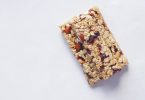In a world filled with fad diets and trendy workout routines, it’s easy to get lost in the noise when trying to make healthier choices. Many people wonder, “Can I eat less and exercise to achieve my fitness goals?” The short answer is yes, but it’s essential to understand the concept, the science behind it, the benefits, and the potential risks and misconceptions associated with it. In this comprehensive guide, we’ll break it all down for you, providing practical tips along the way.
Understanding the Concept of Eating Less and Exercising
When it comes to achieving fitness and weight management goals, the age-old advice of eating less and exercising remains a tried-and-true approach. But what does it really mean to eat less and exercise? Let’s delve into the fundamentals.
The Science Behind Eating Less and Exercising
To answer the question, “Can I eat less and exercise?” let’s start by diving into the science behind this approach. The fundamental principle here is creating a calorie deficit.
Calories quantify energy, and our bodies require a specific amount to maintain our current weight. When you consume fewer calories than your body burns, a deficit is created, leading to weight loss.
Metabolism and Calorie Intake
Your metabolism performs a critical function in this equation. Metabolism pertains to the mechanisms that transform food into energy. It differs from person to person and is affected by factors such as age, gender, genetics, and muscle mass.
When you eat fewer calories, your body starts using stored energy (fat) to compensate for the deficit, which results in weight loss.
Exercise and Calorie Burn
Exercise is the other half of the equation. Physical activity burns calories, and the more you move, the more calories you burn. Cardiovascular exercises like running, swimming, or cycling are excellent for burning calories in the short term.
In contrast, strength training aids in developing muscles, which can raise your resting metabolic rate, implying that you burn more calories even when at rest.
Benefits of Eating Less and Exercising
Now that we’ve established the scientific foundation of eating less and exercising let’s delve into the numerous benefits that come along with this approach. It’s not just about shedding a few pounds; it’s about transforming your life for the better.
Weight Loss
One of the most sought-after benefits of the “eat less and exercise” approach is, of course, weight loss. When you consistently maintain a calorie deficit, your body taps into its fat reserves for energy, leading to a gradual reduction in body fat. It’s essential to note that losing weight too quickly isn’t healthy and can lead to muscle loss and other health issues.
Weight loss is not only about aesthetics but also about improving your overall well-being. Carrying excess weight can put added stress on your joints, increase the risk of conditions like sleep apnea, and contribute to cardiovascular problems.
By adopting a balanced approach to eating less and exercising, you can achieve and maintain a healthy weight that supports your long-term health.
Improved Health
Beyond shedding pounds, eating less and exercising can significantly improve your overall health. It’s like giving your body a complete makeover from the inside out. Here’s how:
-
Cardiovascular Health
Regular exercise, especially aerobic activities like jogging, swimming, or brisk walking, can do wonders for your cardiovascular health. It strengthens your heart, lowers blood pressure, and improves circulation. As a result, the risk of heart disease, stroke, and other cardiovascular conditions decreases significantly.
-
Blood Sugar Control
For individuals with or at risk of type 2 diabetes, combining a balanced diet with exercise can help manage blood sugar levels effectively. Exercise helps your cells become more sensitive to insulin, allowing them to absorb glucose from the bloodstream more efficiently. This can be a game-changer for those managing diabetes or at risk of developing it.
-
Mood and Mental Health
Exercise isn’t just for your body; it’s also a potent tool for improving your mental well-being. Engaging in physical activity stimulates the secretion of endorphins, which are natural mood enhancers. It can reduce symptoms of depression and anxiety, boost self-esteem, and enhance overall mental resilience.
-
Sleep Quality
Struggling with sleepless nights? Regular exercise can help regulate your sleep patterns. It enhances sleep quality by decreasing the time required to fall asleep, prolonging the overall duration of sleep, and ameliorating sleep quality. Just be mindful not to engage in vigorous exercise too close to bedtime, as it can have the opposite effect.
-
Stress Reduction
Modern life can be incredibly stressful, and stress takes a toll on both your physical and mental health. Fortunately, exercise is a fantastic stress-reliever. It releases tension, clears your mind, and promotes relaxation. It’s your natural stress-buster.
Integrating consuming fewer calories and physical activity into your daily regimen can result in substantial enhancements in your health and well-being. It’s not a rapid solution, but rather a long-term commitment to a healthier, more contented version of yourself.
Risks and Misconceptions
As with any approach to health and fitness, there are potential risks and misconceptions that you should be aware of when considering the “eat less and exercise” strategy. Let’s dispel some myths and address these concerns.
Starvation Mode
One common misconception is the idea of “starvation mode.” Some believe that drastically reducing calorie intake will slow down your metabolism, making it harder to lose weight.
While your metabolism can adjust to lower calorie intake to some extent, this usually happens after prolonged periods of extreme calorie restriction. In most cases, a moderate calorie deficit won’t trigger this response.
The human body is incredibly adaptable, and it’s designed to survive in less-than-ideal conditions. When you reduce your calorie intake, your body initially responds by burning stored energy (fat) to meet its energy demands.
Over time, if you continue with a severe calorie deficit, your body may adapt by slowing down your metabolism and conserving energy. This is a survival mechanism designed to prevent starvation during times of scarcity.
However, it’s important to note that “starvation mode” typically only becomes a concern when you’re consistently eating well below your body’s energy needs for an extended period.
In most cases, a moderate and sustainable calorie deficit, combined with a balanced diet and exercise, will not trigger this response. It’s vital to strike a healthy equilibrium that sustains your weight loss objectives without depriving your body of crucial nutrients.
Over-Exercising
Another mistaken belief is that you have to participate in strenuous, everyday workouts to observe outcomes. Although exercise is a vital element of a healthy lifestyle, over-exerting yourself can result in exhaustion, injuries, and an unhealthy connection with fitness.
It’s crucial to discover a viable exercise regimen that you relish and that accommodates your lifestyle. Over-exerting yourself, also known as overtraining, can have adverse effects on your physical and mental well-being. It can result in:
- Injuries: Pushing your body too hard without adequate rest and recovery can result in muscle strains, joint injuries, and overuse injuries.
- Mental Burnout: Constantly pushing yourself to the limit can lead to mental fatigue, reduced motivation, and even feelings of anxiety or depression related to exercise.
- Hormonal Imbalances: Overtraining can disrupt your hormonal balance, potentially affecting your menstrual cycle (in women) and causing changes in appetite and sleep patterns.
- Weakened Immune System: Excessive exercise can weaken your immune system, making you more susceptible to illnesses.
The key to success is finding a balanced approach to exercise. Listen to your body, give it the rest it needs, and don’t feel pressured to adhere to extreme workout routines.
Aim for consistency and gradual progress rather than pushing yourself to the brink. Remember that rest and recovery are essential for achieving your fitness goals safely and sustainably.
Practical Tips for Eating Less and Exercising
Now that we’ve explored the concept, the science, the benefits, and the potential pitfalls of eating less and exercising, let’s get down to the nitty-gritty. How can you apply this approach in your daily life to achieve your health and fitness goals? It’s time to discover some practical tips.
Dietary Changes
When considering eating less, it’s crucial to focus on the quality of your food. Here are some dietary changes you can make:
1. Portion Control: Reduce portion sizes by using smaller plates and being mindful of how much you eat. This simple tactic can help you avoid overindulging without feeling deprived.
2. Balanced Diet: Focus on nutrient-dense foods such as fruits, vegetables, lean proteins, whole grains, and healthy fats. These foods furnish vital nutrients while regulating calorie consumption.
3. Mindful Eating: Pay attention to hunger signals and consume food when you’re genuinely hungry. Avoid emotional eating or snacking mindlessly while watching TV.
4. Hydration: At times, thirst can be confused with hunger. Stay hydrated by drinking an ample amount of water throughout the day, which can potentially decrease the desire to overeat.
5. Meal Planning: Schedule your meals and snacks beforehand to guarantee that you have healthy options at your disposal. This can deter impulsive, less nutritious decisions.
6. Treats in Moderation: Don’t completely deprive yourself of your favorite treats. Enjoy them in moderation to maintain a healthy relationship with food.
Exercise Regime
Now, let’s focus on creating a sustainable exercise regime that complements your dietary changes:
1. Find Activities You Love: Exercising doesn’t have to be a tedious task. Select activities that you genuinely enjoy, whether it’s dancing, hiking, cycling, or playing a sport. When you love what you’re doing, it’s easier to remain dedicated.
2. Mix Cardio and Strength Training: Combine a mixture of cardiovascular workouts (e.g., running, swimming) and strength training (e.g., weightlifting, bodyweight exercises). Cardio burns calories, while strength training builds muscle and enhances metabolism.
3. Set Realistic Goals: Be realistic about your fitness objectives and the time required to accomplish them. Avoid setting yourself up for frustration with excessively ambitious targets.
4. Progress Gradually: Commence with manageable workout routines and gradually intensify the level and duration. Overexerting yourself too soon can lead to exhaustion and injuries.
5. Rest and Recovery: Don’t underestimate the significance of rest days. Your body needs time to recuperate and heal. Overtraining can hinder progress and increase the risk of injuries.
6. Consistency is Key: Maintain consistency with your exercise routine. Strive for regular, sustainable workouts rather than sporadic intense sessions.
Conclusion
So, can you eat less and exercise? Absolutely! It’s a sustainable and effective approach to achieving your fitness and health goals. Understanding the science, reaping the benefits, and avoiding common misconceptions are key to your success.
By making gradual changes to your diet and incorporating regular physical activity into your life, you can embark on a journey toward a healthier, happier you.
Remember, it’s not just about losing weight; it’s about improving your overall well-being. Adopt a balanced approach, listen to your body, and enjoy the process of becoming the best version of yourself.







